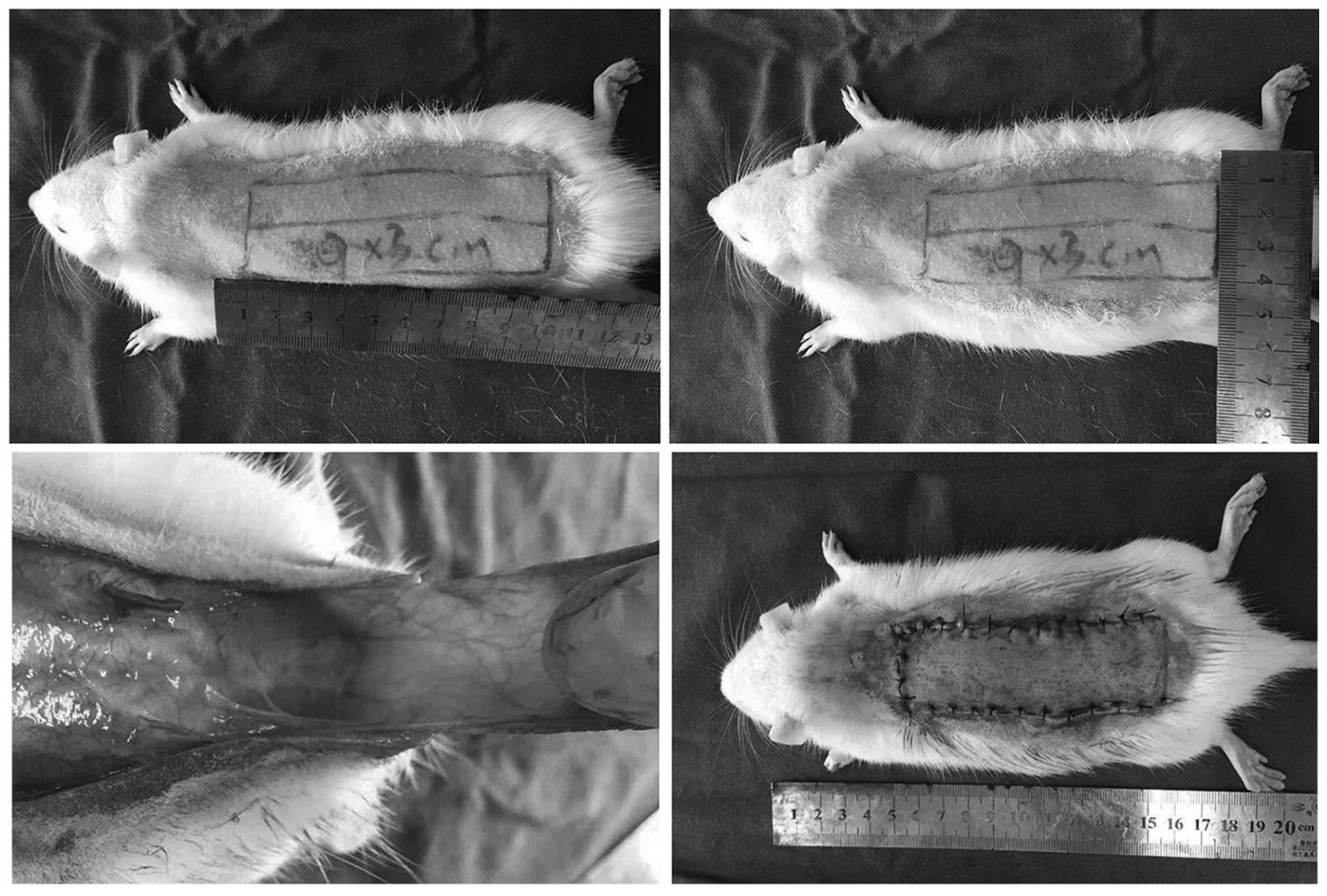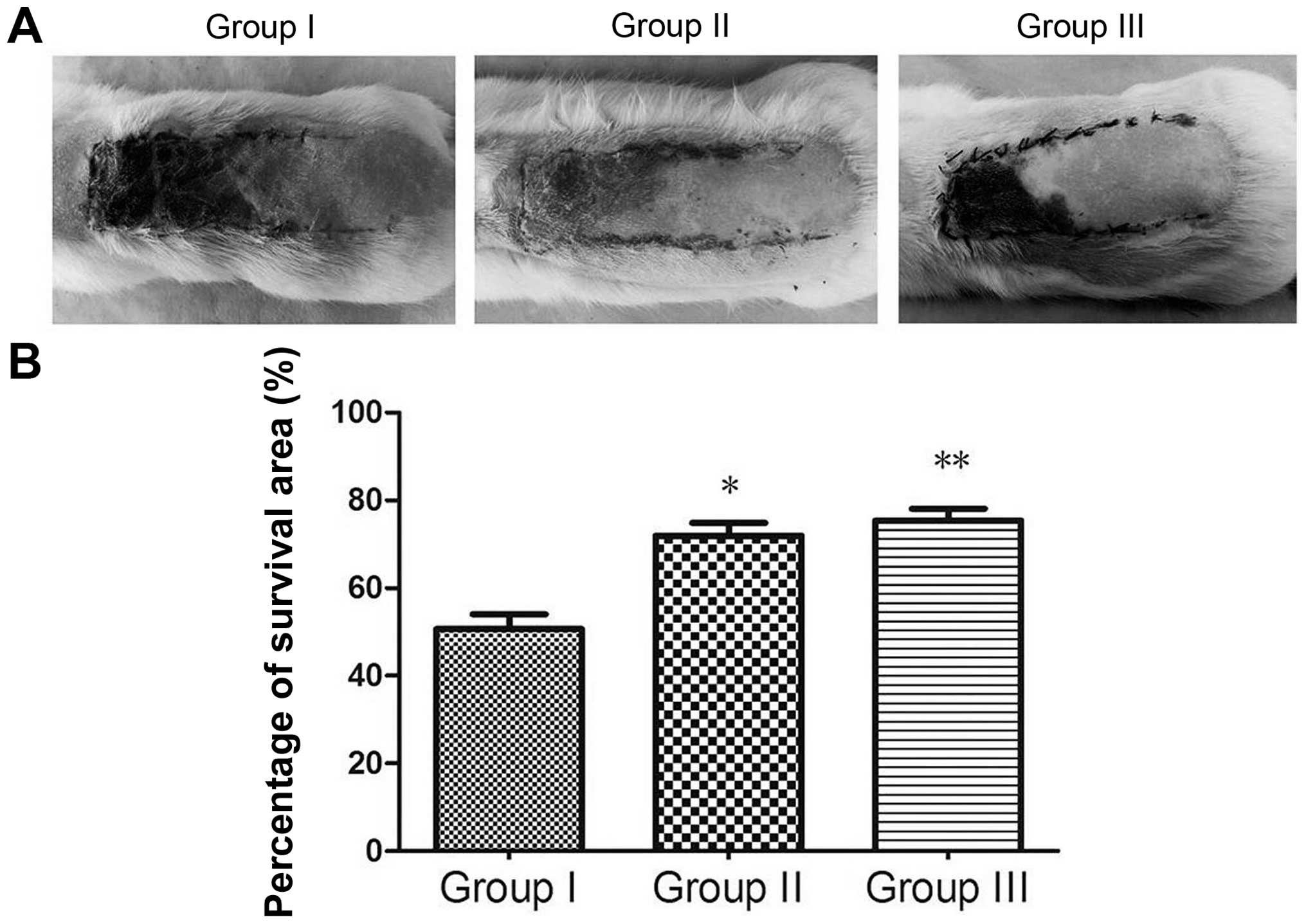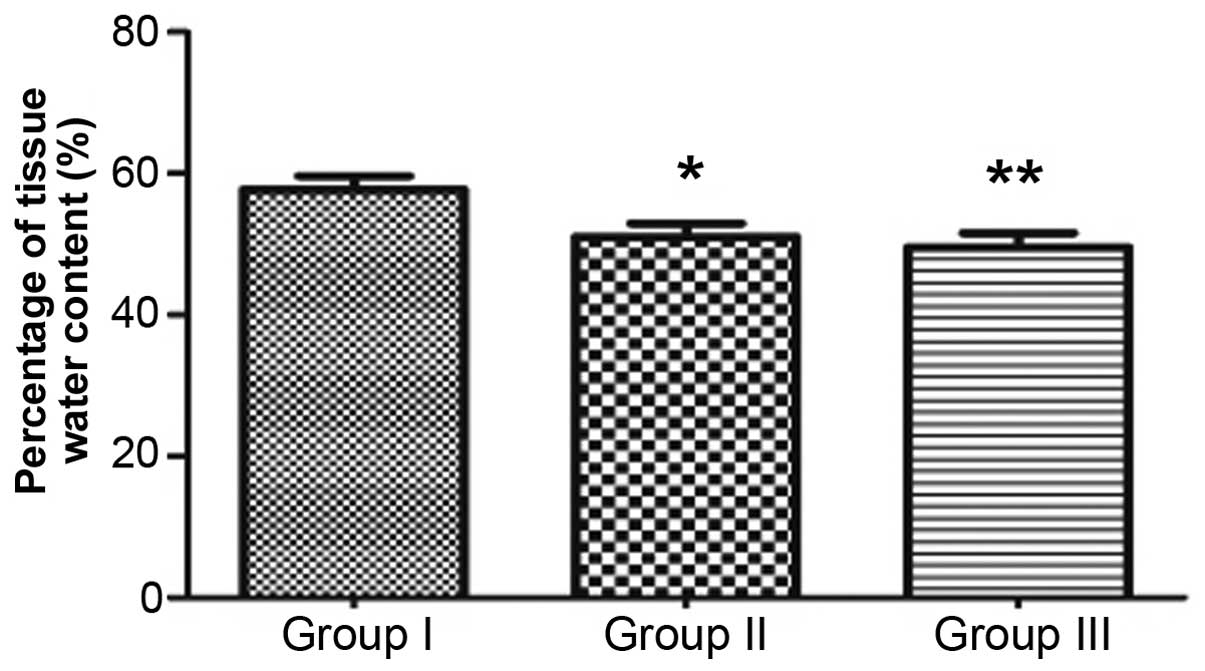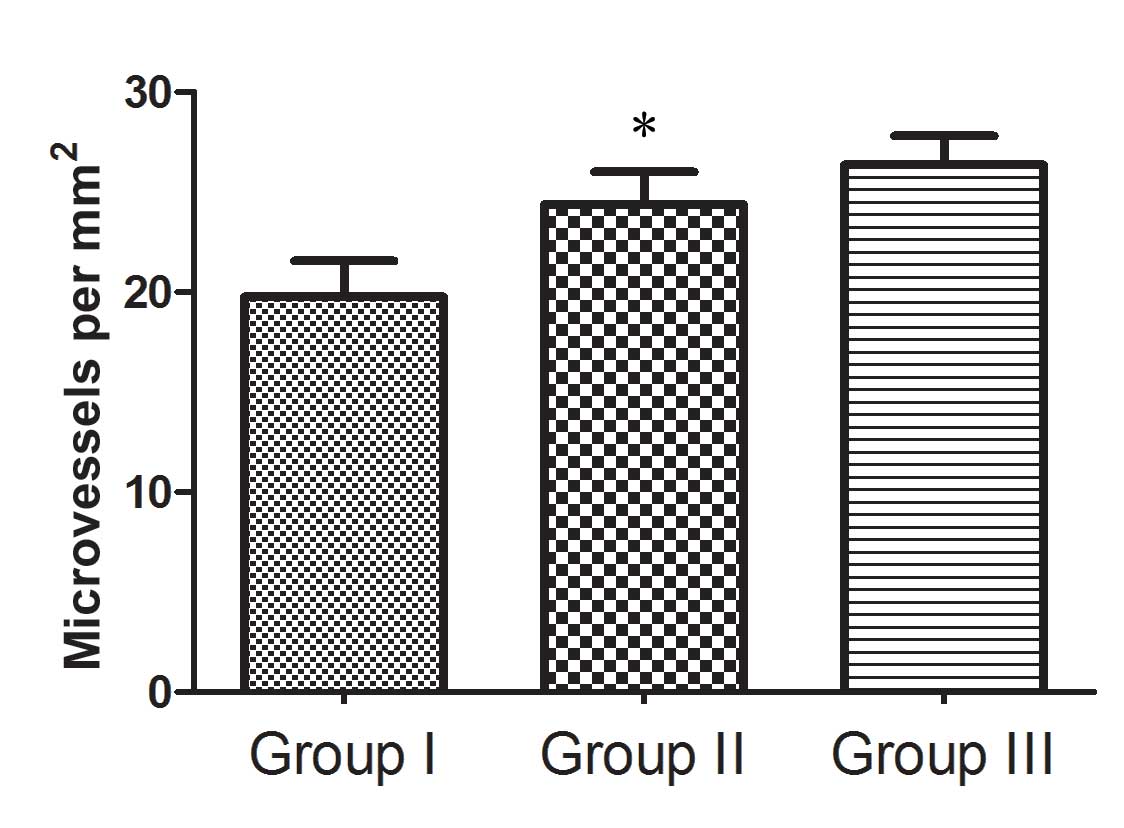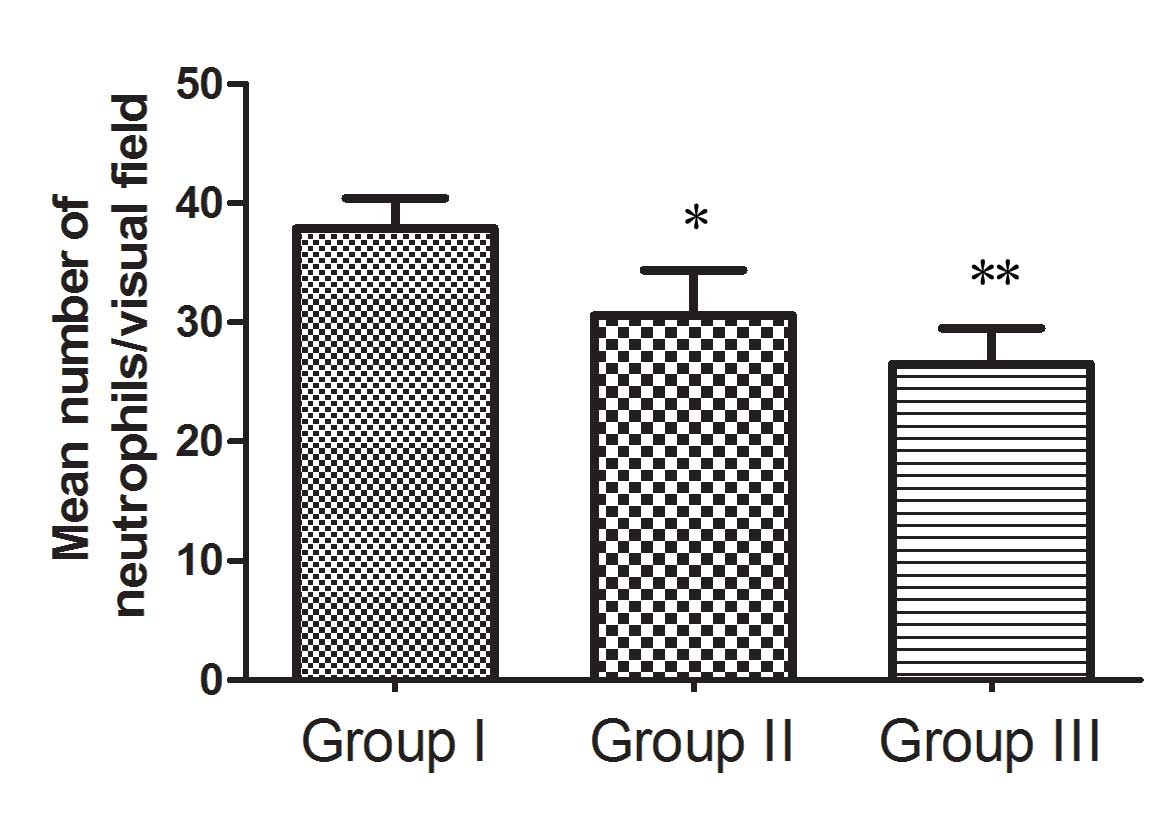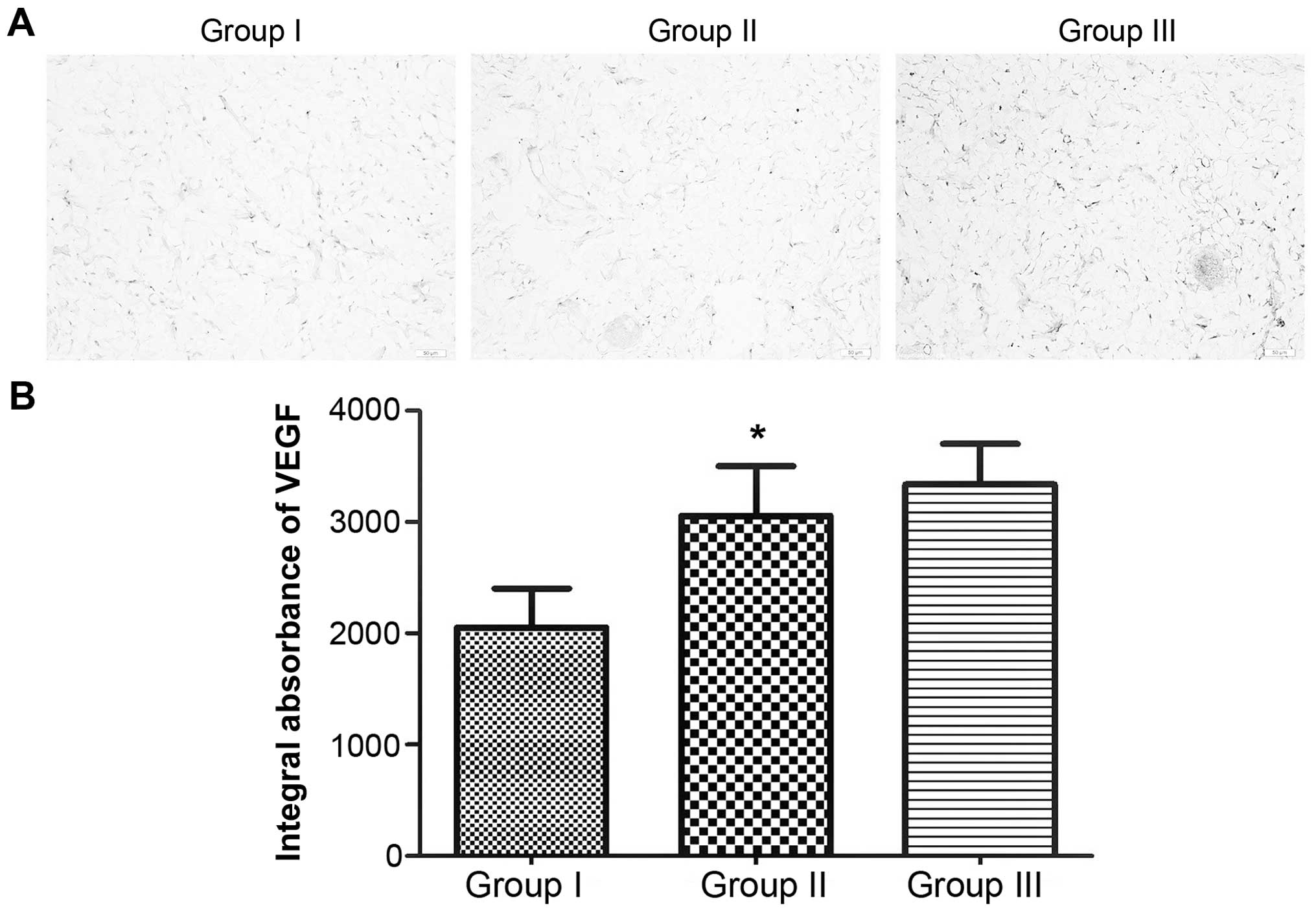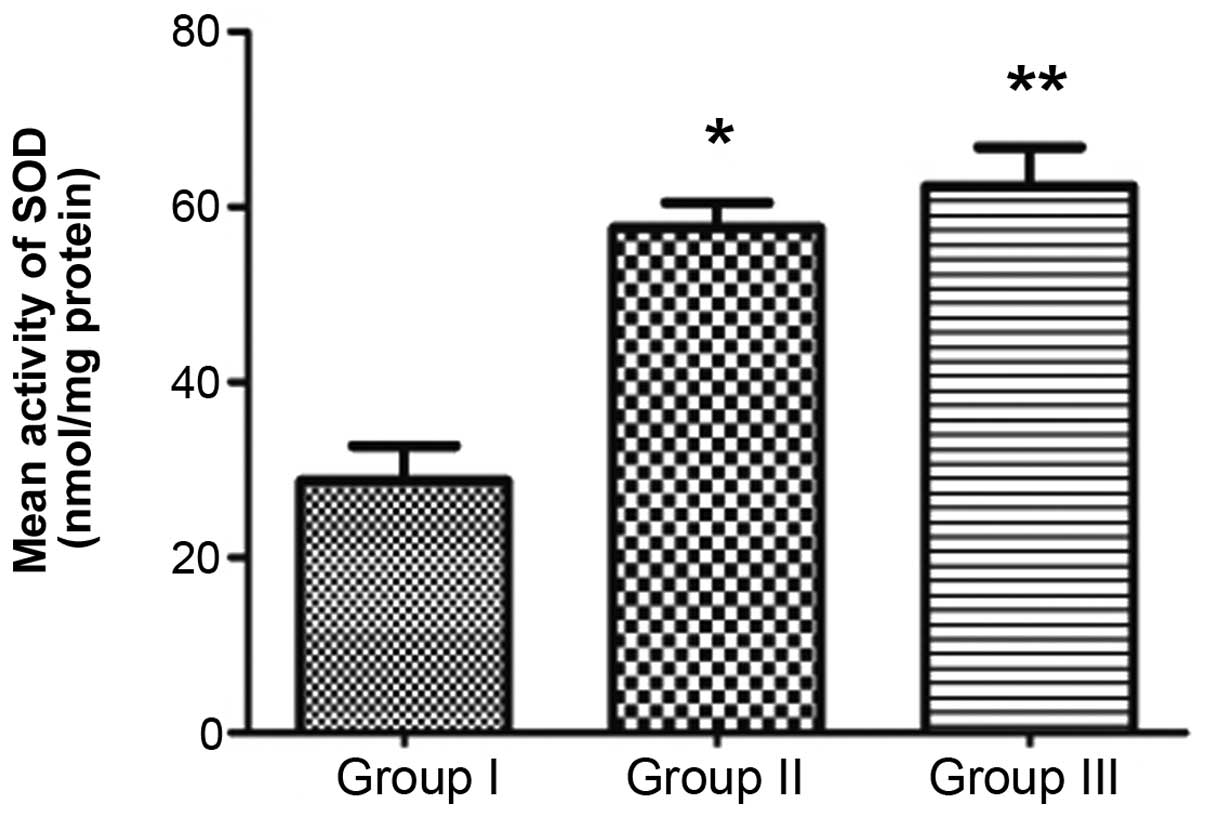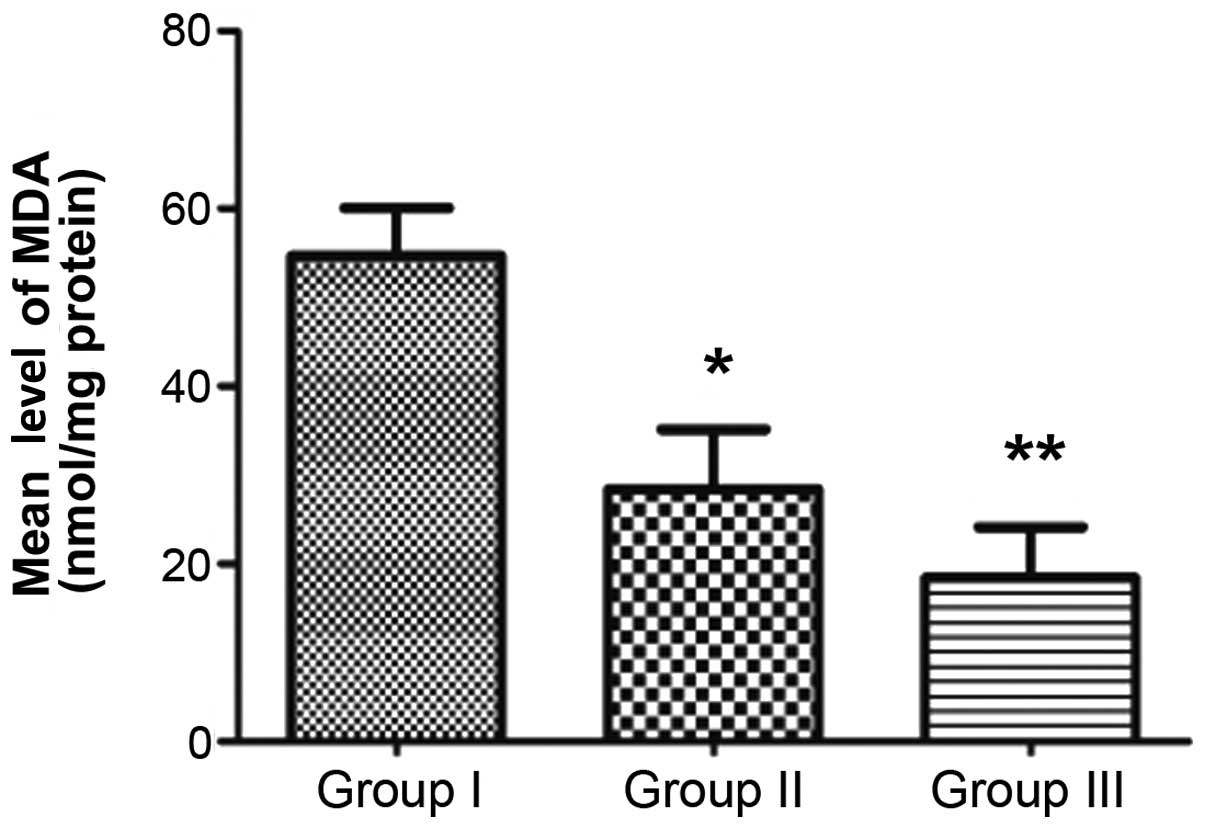|
1
|
Yang M, Sheng L, Li H, Weng R and Li QF:
Improvement of the skin flap survival with the bone marrow-derived
mononuclear cells transplantation in a rat model. Microsurgery.
30:275–281. 2010.PubMed/NCBI
|
|
2
|
Kim HJ, Xu L, Chang KC, Shin SC, Chung JI,
Kang D, Kim SH, Hur JA, Choi TH, Kim S, et al: Anti-inflammatory
effects of anthocyanins from black soybean seed coat on the
keratinocytes and ischemia-reperfusion injury in rat skin flaps.
Microsurgery. 32:563–570. 2012. View Article : Google Scholar : PubMed/NCBI
|
|
3
|
Bin C, Dingsheng L, Leyi C, Bin L, Yuting
L, Liren W and Zhijie L: Beneficial effects of Xuebijing injection
on random skin flap survival in rats. J Surg Res. 196:421–426.
2015. View Article : Google Scholar : PubMed/NCBI
|
|
4
|
Cao B, Wang L, Lin D, Cai L and Gao W:
Effects of lidocaine on random skin flap survival in rats. Dermatol
Surg. 41:53–58. 2015. View Article : Google Scholar : PubMed/NCBI
|
|
5
|
vanRossum TG, Vulto AG, de Man RA, Brouwer
JT and Schalm SW: Review article: Glycyrrhizin as a potential
treatment for chronic hepatitis C. Aliment Pharmacol Ther.
12:199–205. 1998. View Article : Google Scholar : PubMed/NCBI
|
|
6
|
Iino S, Tango T, Matsushima T, Toda G,
Miyake K, Hino K, Kumada H, Yasuda K, Kuroki T, Hirayama C, et al:
Therapeutic effects of stronger neo-minophagen C at different doses
on chronic hepatitis and liver cirrhosis. Hepatol Res. 19:31–40.
2001. View Article : Google Scholar : PubMed/NCBI
|
|
7
|
Yuan H, Ji WS, Wu KX, Jiao JX, Sun LH and
Feng YT: Anti-inflammatory effect of Diammonium Glycyrrhizinate in
a rat model of ulcerative colitis. World J Gastroenterol.
12:4578–4581. 2006. View Article : Google Scholar : PubMed/NCBI
|
|
8
|
Hou SZ, Li Y, Zhu XL, Wang ZY, Wang X and
Xu Y: Ameliorative effects of diammonium glycyrrhizinate on
inflammation in focal cerebral ischemic-reperfusion injury. Brain
Res. 1447:20–27. 2012. View Article : Google Scholar : PubMed/NCBI
|
|
9
|
Mandriota SJ, Pyke C, Di Sanza C, Quinodoz
P, Pittet B and Pepper MS: Hypoxia-inducible angiopoietin-2
expression is mimicked by iodonium compounds and occurs in the rat
brain and skin in response to systemic hypoxia and tissue ischemia.
Am J Pathol. 156:2077–2089. 2000. View Article : Google Scholar : PubMed/NCBI
|
|
10
|
Kelly CP, Gupta A, Keskin M and Jackson
IT: A new design of a dorsal flap in the rat to study skin necrosis
and its prevention. J Plast Reconstr Aesthet Surg. 63:1553–1556.
2010. View Article : Google Scholar : PubMed/NCBI
|
|
11
|
Ren H, Lin D, Mou Z and Dong P: The
adverse effect of selective cyclooxygenase-2 inhibitor on random
skin flap survival in rats. PLoS One. 8:e828022013. View Article : Google Scholar : PubMed/NCBI
|
|
12
|
Chen Y, Tong H, Zhang X, Tang L, Pan Z,
Liu Z, Duan P and Su L: Xuebijing injection alleviates liver injury
by inhibiting secretory function of Kupffer cells in heat stroke
rats. J Tradit Chin Med. 33:243–249. 2013. View Article : Google Scholar : PubMed/NCBI
|
|
13
|
Yamaguchi S, Watanabe G, Tomita S and
Tabata S: Lidocaine-magnesium blood cardioplegia was equivalent to
potassium blood cardioplegia in left ventricular function of canine
heart. Interact Cardiovasc Thorac Surg. 6:172–176. 2007. View Article : Google Scholar : PubMed/NCBI
|
|
14
|
Liu L, Liu Y, Cui J, Liu H, Liu YB, Qiao
WL, Sun H and Yan CD: Oxidative stress induces gastric submucosal
arteriolar dysfunction in the elderly. World J Gastroenterol.
19:9439–9446. 2013. View Article : Google Scholar : PubMed/NCBI
|
|
15
|
Coskunfirat OK, Cinpolat A, Bektas G, Ogan
O and Taner T: Comparing different postconditioning cycles after
ischemia reperfusion injury in the rat skin flap. Ann Plast Surg.
72:104–107. 2014. View Article : Google Scholar : PubMed/NCBI
|
|
16
|
Xu R, Ge J, Lei Y and Lu X: Improvement
effect of estrogen on flap reperfusion injury and blood supply.
Zhongguo Xiu Fu Chong Jian Wai Ke Za Zhi. 23:964–968. 2009.(In
Chinese). PubMed/NCBI
|
|
17
|
Zhang F and Lineaweaver W: Acute and
sustained effects of vascular endothelial growth factor on survival
of flaps and skin grafts. Ann Plast Surg. 66:581–582. 2011.
View Article : Google Scholar : PubMed/NCBI
|
|
18
|
Zhang F, Fischer K, KomorowskaTimek E, Guo
M, Cui D, DorsettMartin W, Buncke HJ and Lineaweaver WC:
Improvement of skin paddle survival by application of vascular
endothelial growth factor in a rat TRAM flap model. Ann Plast Surg.
46:314–319. 2001. View Article : Google Scholar : PubMed/NCBI
|
|
19
|
Cai L, Cao B and Lin D: Effects of
Traditional Chinese Medicine Huangqi Injection (Radix astragali) on
Random Skin Flap Survival in Rats. J Reconstr Microsurg.
31:565–570. 2015. View Article : Google Scholar : PubMed/NCBI
|
|
20
|
Cai L, Huang W and Lin D: Effects of
traditional Chinese medicine Shuxuetong injection on random skin
flap survival in rats. Sci World J. 2014:8165452014. View Article : Google Scholar
|
|
21
|
Tang B, Qiao H, Meng F and Sun X:
Glycyrrhizin attenuates endotoxin- induced acute liver injury after
partial hepatectomy in rats. Braz J Med Biol Res. 40:1637–1646.
2007. View Article : Google Scholar : PubMed/NCBI
|
|
22
|
Abe K, Ikeda T, Wake K, Sato T, Sato T and
Inoue H: Glycyrrhizin prevents of
lipopolysaccharide/D-galactosamine-induced liver injury through
down-regulation of matrix metalloproteinase-9 in mice. J Pharm
Pharmacol. 60:91–97. 2008. View Article : Google Scholar : PubMed/NCBI
|
|
23
|
Tsuruoka N, Abe K, Wake K, Takata M, Hatta
A, Sato T and Inoue H: Hepatic protection by glycyrrhizin and
inhibition of iNOS expression in concanavalin A-induced liver
injury in mice. Inflamm Res. 58:593–599. 2009. View Article : Google Scholar : PubMed/NCBI
|
|
24
|
Yoshida T, Abe K, Ikeda T, Matsushita T,
Wake K, Sato T, Sato T and Inoue H: Inhibitory effect of
glycyrrhizin on lipopolysaccharide and d-galactosamine-induced
mouse liver injury. Eur J Pharmacol. 576:136–142. 2007. View Article : Google Scholar : PubMed/NCBI
|
|
25
|
Lee CH, Park SW, Kim YS, Kang SS, Kim JA,
Lee SH and Lee SM: Protective mechanism of glycyrrhizin on acute
liver injury induced by carbon tetrachloride in mice. Biol Pharm
Bull. 30:1898–1904. 2007. View Article : Google Scholar : PubMed/NCBI
|
|
26
|
Yingxin G, Guoqian Y, Jiaquan L and Han X:
Effects of natural and recombinant hirudin on VEGF expression and
random skin flap survival in a venous congested rat model. Int
Surg. 98:82–87. 2013. View
Article : Google Scholar : PubMed/NCBI
|
|
27
|
Bächle AC, Mörsdorf P, Rezaeian F, Ong MF,
Harder Y and Menger MD: N-acetylcysteine attenuates leukocytic
inflammation and microvascular perfusion failure in critically
ischemic random pattern flaps. Microvasc Res. 82:28–34. 2011.
View Article : Google Scholar : PubMed/NCBI
|
|
28
|
Neurath MF, Fuss I, Schürmann G,
Pettersson S, Arnold K, Müller-Lobeck H, Strober W, Herfarth C and
Büschenfelde KH: Cytokine gene transcription by NF-kappa B family
members in patients with inflammatory bowel disease. Ann N Y Acad
Sci. 859:(1 INTESTINAL PL). 149–159. 1998. View Article : Google Scholar : PubMed/NCBI
|
|
29
|
Blackwell TS and Christman JW: The role of
nuclear factor-kappa B in cytokine gene regulation. Am J Respir
Cell Mol Biol. 17:3–9. 1997. View Article : Google Scholar : PubMed/NCBI
|
|
30
|
Vourtsis SA, Spyriounis PK, Agrogiannis G,
Papalois A and Ionac M: Does VEGF have an effect on the survival of
a long random skin flap by its application at the recipient area?
Chirurgia (Bucur). 107:494–500. 2012.PubMed/NCBI
|
|
31
|
Fang T, Lineaweaver WC, Chen MB, Kisner C
and Zhang F: Effects of vascular endothelial growth factor on
survival of surgical flaps: A review of experimental studies. J
Reconstr Microsurg. 30:1–13. 2014. View Article : Google Scholar : PubMed/NCBI
|
|
32
|
Braunersreuther V and Jaquet V: Reactive
oxygen species in myocardial reperfusion injury: From
physiopathology to therapeutic approaches. Curr Pharm Biotechnol.
13:97–114. 2012. View Article : Google Scholar : PubMed/NCBI
|
|
33
|
Ozkan F, Senayli Y, Ozyurt H, Erkorkmaz U
and Bostan B: Antioxidant effects of propofol on tourniquet-induced
ischemia-reperfusion injury: An experimental study. J Surg Res.
176:601–607. 2012. View Article : Google Scholar : PubMed/NCBI
|
|
34
|
Cui J, Liu L, Zou J, Qiao W, Liu H, Qi Y
and Yan C: Protective effect of endogenous hydrogen sulfide against
oxidative stress in gastric ischemia-reperfusion injury. Exp Ther
Med. 5:689–694. 2013.PubMed/NCBI
|
|
35
|
Sirota TV, Zakharchenko MV and Kondrashova
MN: Cytoplasmic superoxide dismutase activity is a sensitive
indicator of the antioxidant status of the rat liver and brain.
Biomed Khim. 60:63–71. 2014.(In Russian). View Article : Google Scholar : PubMed/NCBI
|
|
36
|
Sun L, Li Y, Shi J and Wang X and Wang X:
Protective effects of ligustrazine on ischemia-reperfusion injury
in rat kidneys. Microsurgery. 22:343–346. 2002. View Article : Google Scholar : PubMed/NCBI
|



